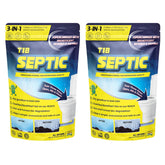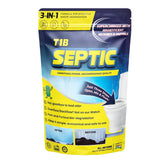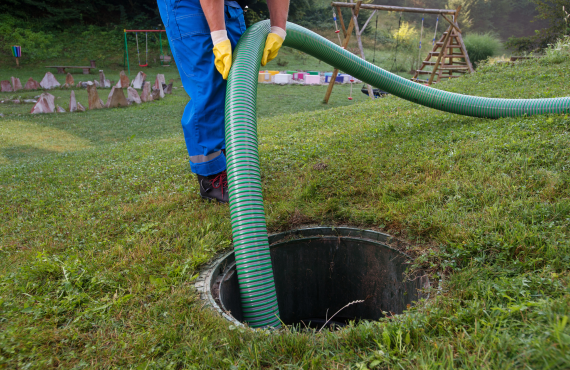How Septic Tanks Work: An In-Depth Look at Your Home’s Hidden Treatment System
What Is a Septic Tank?
A septic tank is a self-contained, underground wastewater treatment system that handles all the water and waste coming from your home’s toilets, sinks, showers, and appliances. Unlike centralized sewage systems, which send wastewater to large treatment facilities, a septic tank treats the water on-site using natural processes. This makes it an ideal solution for areas where municipal sewer lines are impractical or too expensive.
Key Components of a Septic Tank System
- The Septic Tank Itself: A watertight container, typically made of concrete, fiberglass, or polyethylene, designed to hold wastewater long enough for solids to settle.
- Inlet Pipe: The passage through which wastewater enters the tank from your home.
- Outlet Pipe: Directs partially treated wastewater (effluent) from the tank to the drain field.
- Drain Field (Leach Field): A network of perforated pipes buried in gravel-filled trenches. Here, the effluent percolates through the soil, which further purifies the water before it reaches the groundwater table.
The Inner Workings of a Septic Tank
Understanding how a septic tank works can help demystify what happens beneath your feet. The process relies on both physical separation and biological treatment.
1. Wastewater Entry and Separation
When you flush the toilet or run water in your home, wastewater flows through the inlet pipe into the septic tank. Here’s what happens next:
- Settling of Solids: Heavy solids, like food particles and human waste, sink to the bottom of the tank, forming what’s known as the sludge layer.
- Floating Scum: Lighter substances, such as grease, oils, and fats, rise to the top, creating a scum layer.
- Middle Effluent: The relatively clear water in between these layers is the effluent, which contains dissolved and suspended materials. This water is directed out of the tank into the drain field.
2. Biological Digestion
Inside the tank, anaerobic bacteria play a crucial role. These microorganisms break down the organic matter in the sludge and scum. Although this process doesn’t completely neutralize all the contaminants, it significantly reduces the volume of waste and minimizes the potential for odors.
- Anaerobic Process: Occurring in an oxygen-free environment, the bacteria digest the waste, breaking complex organic compounds into simpler substances.
- Reduction in Volume: Over time, the amount of sludge builds up slowly, which is why periodic pumping is necessary.
3. Effluent Treatment in the Drain Field
Once the partially treated effluent leaves the septic tank, it enters the drain field. Here, the soil acts as a natural filter:
- Filtration: As water flows through the layers of soil and gravel, physical filtration and additional microbial action remove remaining impurities.
- Recharging Groundwater: The clean water eventually percolates into the groundwater system, safely reintegrating into the local water cycle.
The Importance of Proper Maintenance
A septic tank is designed to work efficiently for many years, but it does require regular care to avoid problems. Neglecting maintenance can lead to clogs, system failures, and even environmental contamination.
Water Conservation Tips
- Reduce Water Usage: Excessive water can overwhelm the septic system, reducing its ability to treat wastewater effectively.
- Mind What You Flush: Avoid flushing non-biodegradable items or chemicals that can harm the beneficial bacteria.
Regular Inspections
- Professional Check-Ups: Having your system inspected by a septic service professional can help detect issues early.
- Monitoring Drain Field Health: Look out for signs like soggy ground or foul odors, which might indicate a failing drain field.
Common Problems and How to Avoid Them
Even with proper maintenance, issues can arise. Being aware of common problems can help you address them before they become serious.
1. System Overload
Using too much water at once or during heavy rains can overload your septic system, leading to backups. Spread out water usage during peak times and consider installing water-saving fixtures.
2. Clogged Pipes
Non-biodegradable items or excessive grease can clog the pipes leading to or from your septic tank. Implement a waste reduction strategy in your household and dispose of hazardous substances properly.
3. Drain Field Failure
If the soil in your drain field becomes compacted or saturated, it may not effectively filter the effluent. Avoid driving or parking heavy vehicles over the drain field, and plant only shallow-rooted vegetation in the area.
Conclusion
Septic tanks are a vital part of many rural and suburban homes, providing an efficient, on-site solution for wastewater treatment. By understanding the basic mechanics—from the initial separation of waste in the tank to the natural filtration process in the drain field—you can appreciate the engineering behind this essential system. Regular maintenance, mindful water usage, and routine inspections are key to keeping your septic system running smoothly and protecting both your home and the environment.
Maintaining your septic system isn’t just about avoiding unpleasant odors or messy backups; it’s about safeguarding a system that plays a crucial role in public health and environmental protection. Whether you’re a long-time septic tank owner or new to the system, being informed is the first step toward ensuring its longevity and effectiveness.








Leave a comment
Please note, comments need to be approved before they are published.